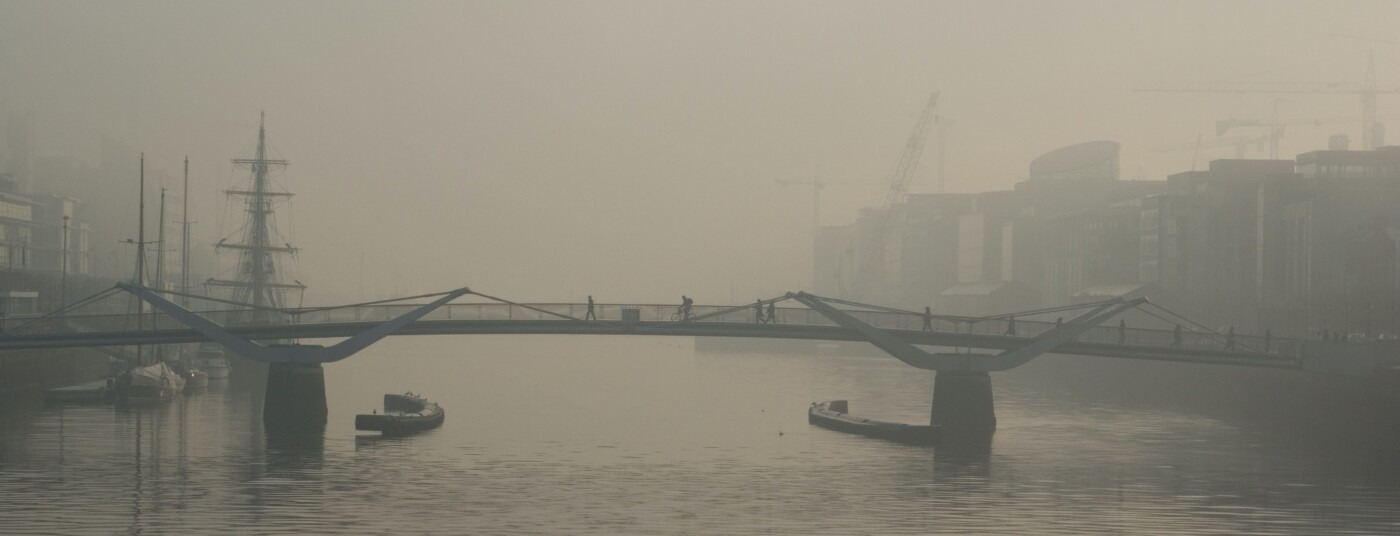The Great Smog of London – 70 Years on
Since its creation, London has been a city suffering from poor air quality. In the 1661 book Fumifugium, the first ever book about air pollution, diarist John Evelyn describes the “inconveniencie of the aer and smoak of London”, and things only got worse as the nation underwent its Industrial Revolution. Yet one event stands tall as the worst air pollution event in the history of the UK, one that took place in London and which killed thousands of people. On its 70th anniversary, here’s a look back at the events of the 1952 Great Smog of London.
The smog began on the fifth of December. The day was cold. Indeed, it had been cold for weeks. And so, as the Londoners awoke, they stoked their coal fireplaces to take the chill from the early morning air. As the day progressed, a veil of fog began to enshroud major city landmarks. This was not in itself unusual, especially given the climate. However, within a few hours the fog began to turn yellowy-brown as it mixed with thousands of tons of soot pumped into the air by London’s factory smokestacks, chimneys, and automobiles – as well as the smoke emitted by the city’s new diesel buses.
The initial response was one of ‘keep calm and carry on’, but it swiftly became clear that this was a crisis as the smog thickened into a poisonous atmosphere, unlike anything London had ever experienced. The pollution was nothing new, but the climate factors were. A high-pressure weather system had stalled over southern England, causing a temperature inversion in which the warm air above trapped the cold air at ground level. This prevented the smog from rising and as there was no wind, it could not be dispersed. The result was poisonous smog getting worse by the day.
It swiftly became clear that this was a crisis as the smog thickened into a poisonous atmosphere, unlike anything London had ever experienced. The pollution was nothing new, but the climate factors were
It got so thick, some residents could not see their feet as they walked. All transportation (except for the underground) was paralysed: drivers needed their headlights in the middle of the day and many simply abandoned their cars. People had to feel their way around the city. The paths were coated with black polluted ooze and people’s faces and nostrils were blackened by the air. Children were kept at home from school and crime soared as criminals could easily vanish. The smog also seeped into some buildings and exposed surfaces would be covered in polluted grime as a result. In some cinemas where the smog penetrated, it was impossible to see the screen.
Although the smog brought London to a halt, the most immediate impact was on the health of Londoners. Reports estimated that around 4,000 people died prematurely in the immediate aftermath, with the elderly and young children particularly affected by the pollution. Deaths from bronchitis and pneumonia increased more than sevenfold, and undertakers began to run out of coffins. On the ninth of December, a brisk wind swept the smog out to the North Sea, but death rates remained heightened well into the summer of 1952. Around 12,000 deaths have been attributed to the phenomenon, without mentioning all the animal deaths too.
4,000 people died prematurely in the immediate aftermath, with the elderly and young children particularly affected by the pollution
Perhaps surprisingly, the British government was slow to respond. There was a sense that this was just another fog, something London often experienced. But after an investigation, Parliament passed the Clean Air Act of 1956, which restricted the burning of coal in urban areas and authorised local councils to set up smoke-free zones. This was a major event in the history of air quality legislation, the first successful air pollution laws anywhere, and it paved the way for further such laws and regulations to improve public health in Britain (including an updated Clean Air Act in 1968). There was a gradual transition away from coal as the city’s main source of power, and it took time. Other deadly fogs did occur, but none anywhere near the scale of the 1952 smog.
Air pollution has remained a problem in London, and although it’s nowhere near as immediately obvious as the smog, it’s still an issue that successive governments and mayors have aimed to tackle. In 2003, the Congestion Charge Zone in Central London was introduced, meaning motorists must pay each time they enter. It’s a financial deterrent aimed to reduce both traffic flow and pollution. Just last week, Mayor Sadiq Khan announced plans to expand the Ultra Low Emission Zone across the entirety of the city in order to tackle air pollution. We’re unlikely to ever see a combination of industry and weather leading to an event as dangerous as the smog, but that doesn’t mean that there isn’t still work to be done.

Comments